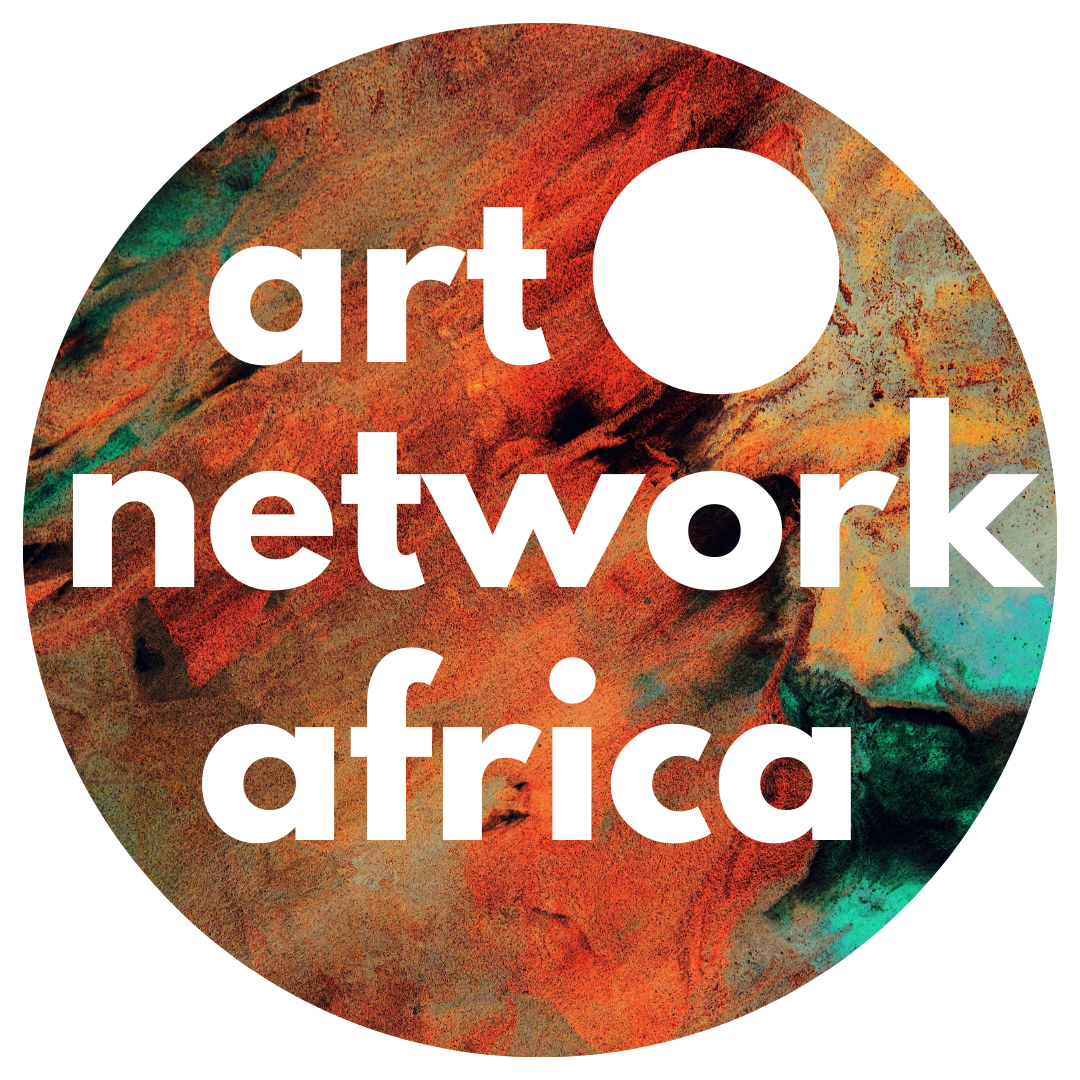Goodman Gallery presents Ravelle Pillay’s American debut with Sanctum (The Light and the Shade), the artist’s first solo exhibition at the gallery’s New York location. The exhibition features a new series of paintings that respond to Pillay’s 2024 trip to Réunion Island, offering a layered exploration of the island’s complex colonial history and its enduring influence on the landscape and its people. Through her work, Pillay examines themes of cultural hybridity, resilience and the ways landscapes bear witness to history.
Located in the Indian Ocean between Mauritius and Madagascar, Réunion Island is presently an overseas department of France with a cultural heritage shaped by African, Indian, Chinese and French influences. Pillay’s paintings respond to the complexities of pre- and colonial history; its postcolonial present and creole culture. Her work confronts the lingering presence of plantation society—its brutality and its enduring impact on contemporary life, agriculture and the island’s historical and present-day economy and politics.
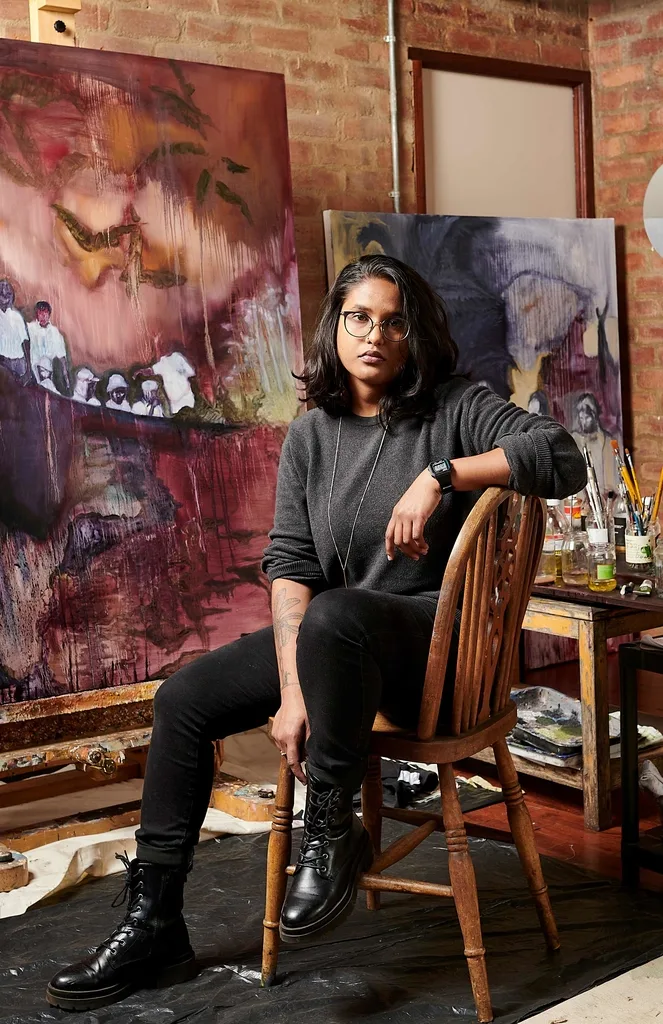
Pillay reflects on the historical significance of sanctuaries accessible only by helicopter or foot, along treacherous cliffside paths first forged by the Maroons, enslaved people who escaped captivity. These landscapes of refuge, marked by painted shrines and Madonnas, attest to distinct threads linking African people, enslaved by the French creole elite; enslaved and indentured Indian and Chinese labourers and the long reach of British colonial power.
Central to Sanctum (The Light and the Shade) is the Reunionese legend of Mario, an enslaved man who escaped his captor’s plantation in the parish of Sainte-Marie. With his pursuers close behind and his capture seeming inevitable, Mario pulled out a small stone effigy he had carved of a Black Madonna, set her on a rock and began to pray for salvation. According to local legend, as the slave catchers were about to descend on him, a dense, impenetrable copse of sharp bougainvillea sprang from the ground to protect him. A shrine to the Vierge Noire (Black Madonna) stands at the spot this miracle is said to have occurred.
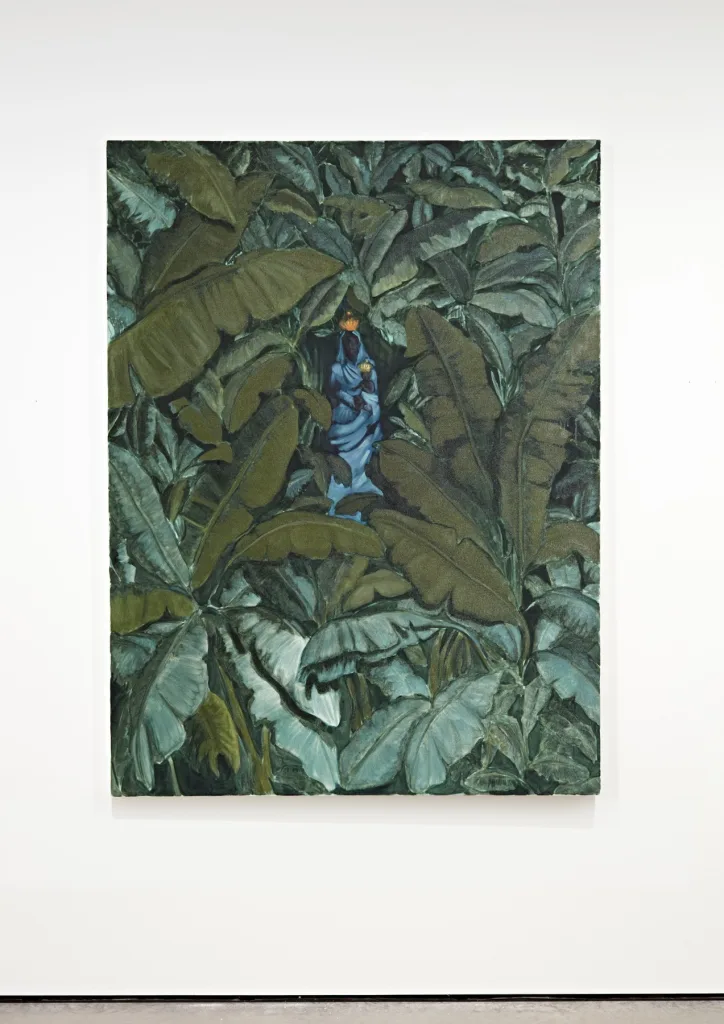
In opposition to the Black Virgin is the inverse—the white, ultramarine, marble and porcelain Virgin, a figure embedded in the plantations, fields, bed chambers and chapels. In the large-scale painting ‘Grove’, Pillay portrays the Vierge Noire, shrouded by towering banana leaves that create a protective, maternal sanctuary. In ‘Bounty (The After-Image)’, a figure is enveloped by vibrant magenta bougainvillea—its branches both sharp and protective, offering seclusion as much as they can cut and sting. An evergreen vanilla vine weaves through the composition, tracing its origins to Mexico before French colonists introduced it to La Réunion. It was there that Edmond Albius, a 12-year-old enslaved boy, discovered the method of artificial pollination that enabled vanilla cultivation on the island—an innovation for which he was never compensated.
Fundamental to her practice, Pillay approaches these narratives with a deep sensitivity to materiality—from the texture of the primed canvas to the way pigment seeps and settles. The formal qualities of her paintings remain in constant dialogue with her exploration of landscape as a site of subjectivity. Drawing from both archival and contemporary photographs, she manipulates and reimagines imagery to construct layered visual narratives that bridge past and present.
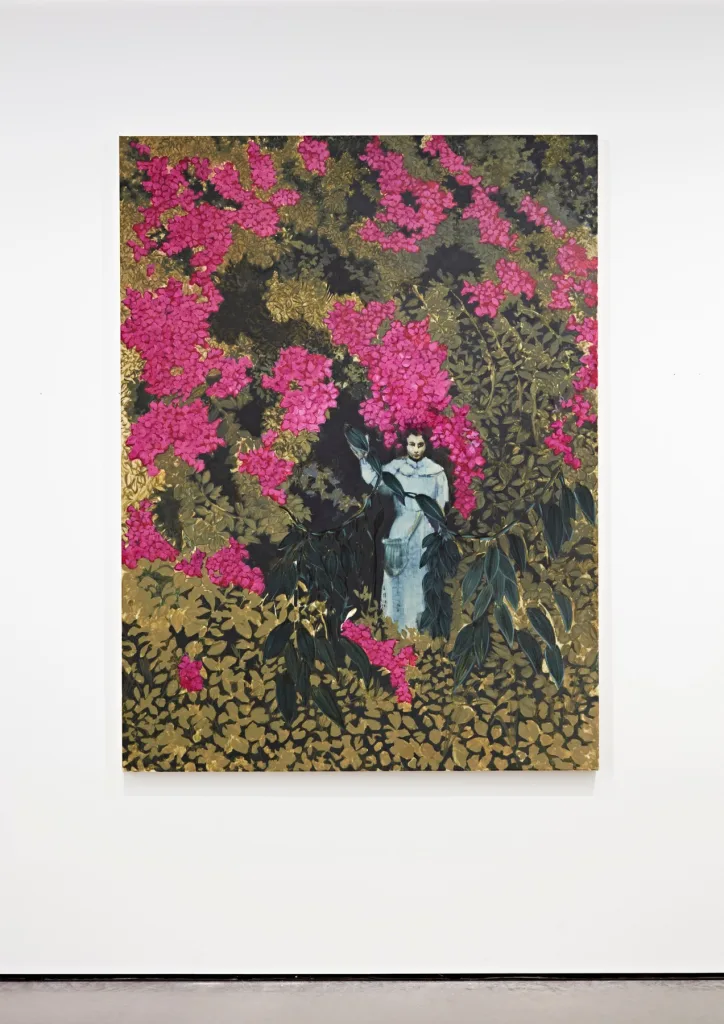
Through this exhibition, Pillay creates a space for reflection on the enduring legacies of colonialism, the resilience held within cultural memory and the narratives inscribed in the land itself. The histories, trade routes, and cross-pollinating influences of the Indian Ocean remain central to her thinking, alongside the lasting effects of colonial intervention and the seductive, yet deceptive, allure of tropical landscapes.
Ravelle Pillay (b. 1993, South Africa) is an artist living and working in London. Her breakthrough solo exhibition, Idyll, at Chisenhale Gallery, London (2023), coincided with a Gasworks Residency in London. The following year, she was included in Soulscapes at Dulwich Picture Gallery, London.
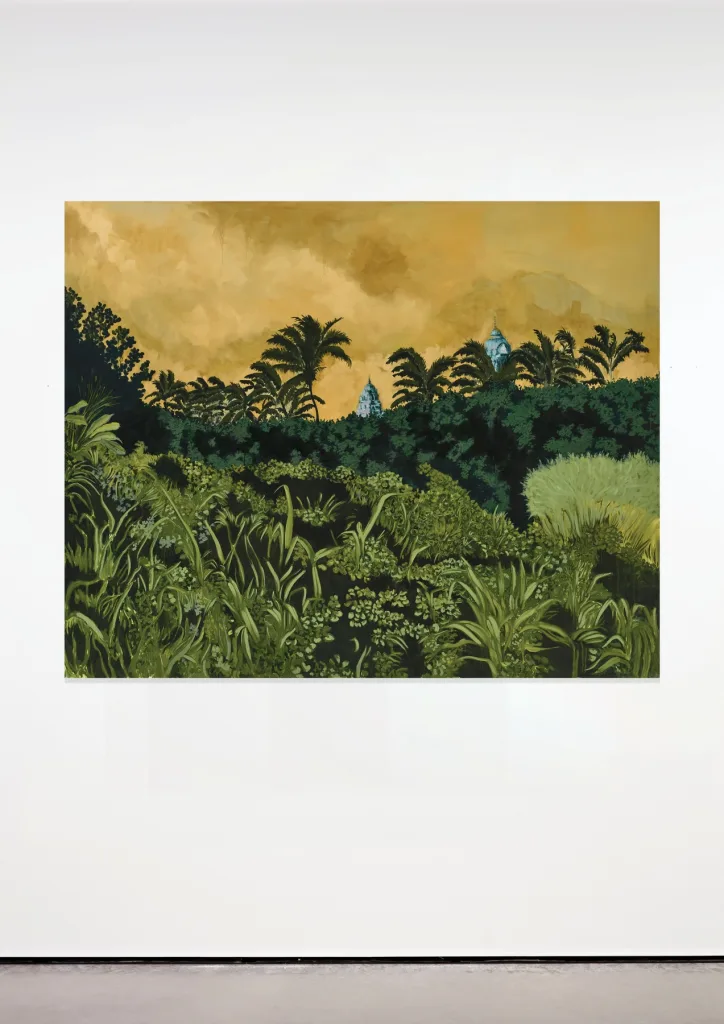
Pillay received her degree in Fine Art from the University of the Witwatersrand and is the recipient of the 2022 African Art Galleries Association’s Emerging Painting Invitational Prize. Her work is held in numerous institutional collections, including the Anglo American Art Collection, London; A4 Arts Foundation Collection, Cape Town; Pérez Art Museum, Miami; and the Nasher Museum of Art at Duke University. In September 2025, Pillay will unveil a major institutional commission in the UK. The exhibition opened on the 29th of April and will run until the 30th of June 2025 at Goodman Gallery New York.
